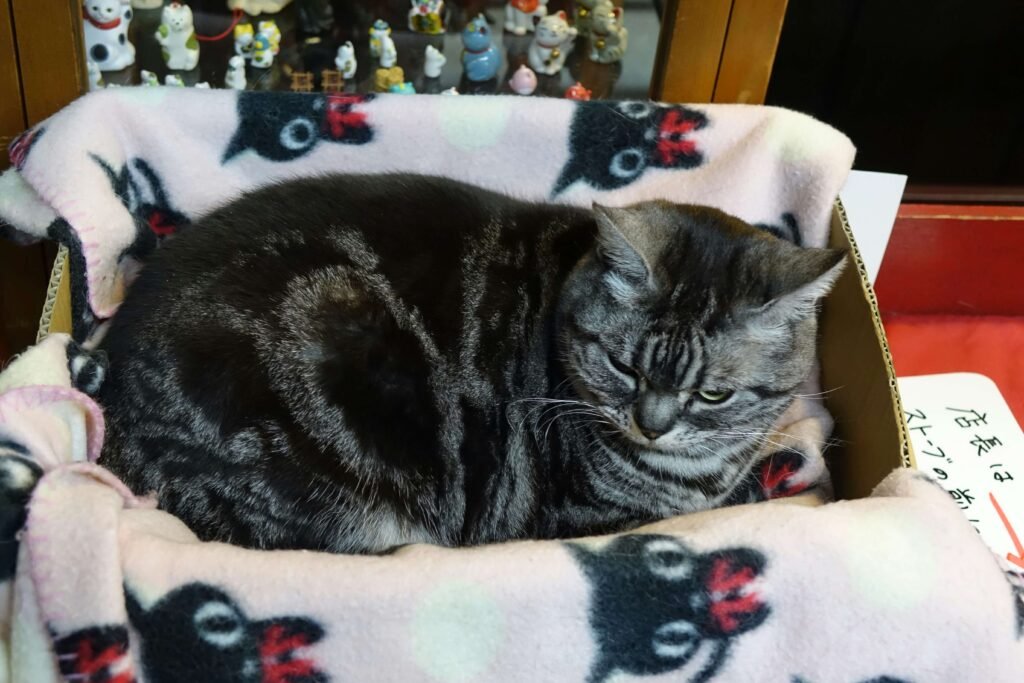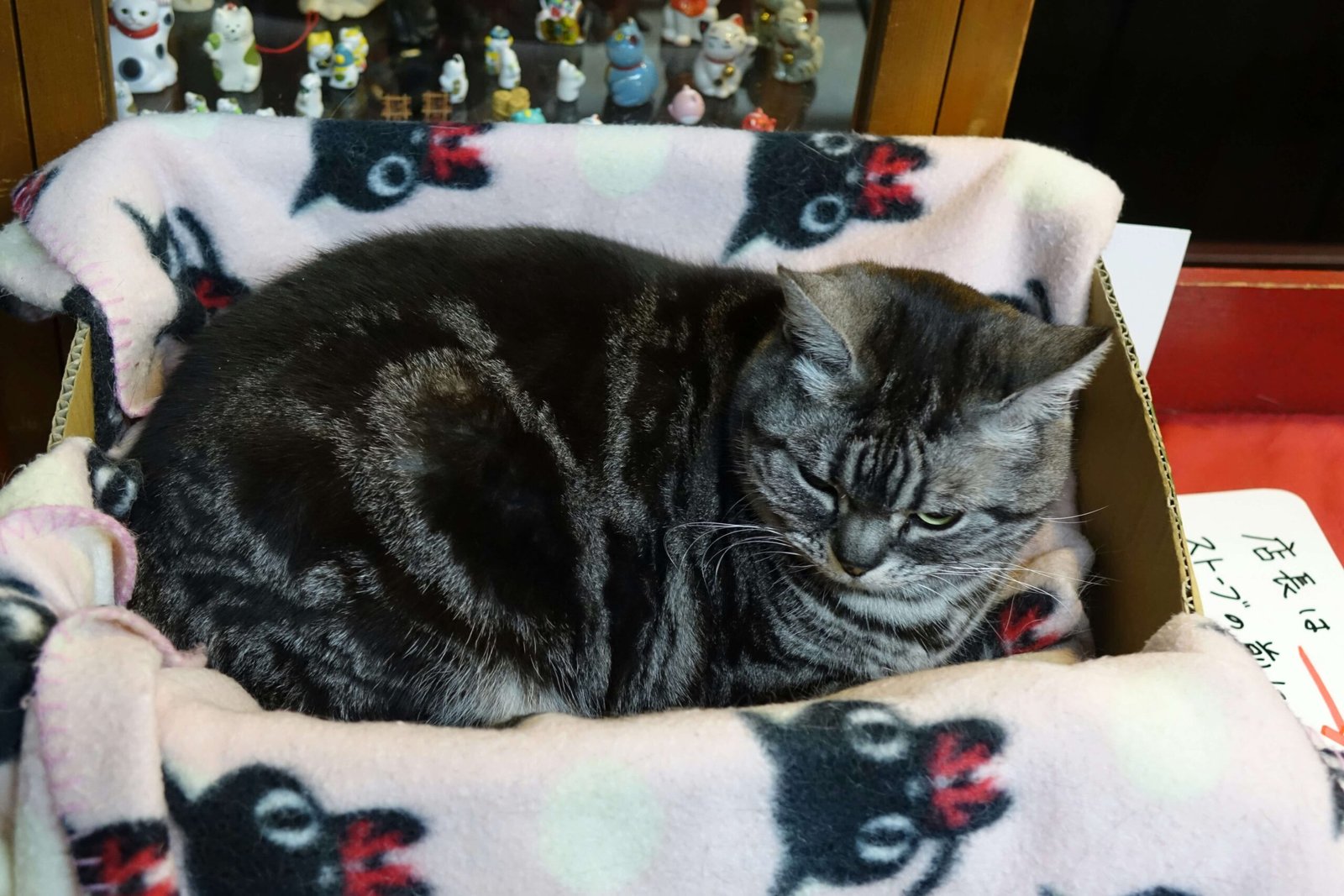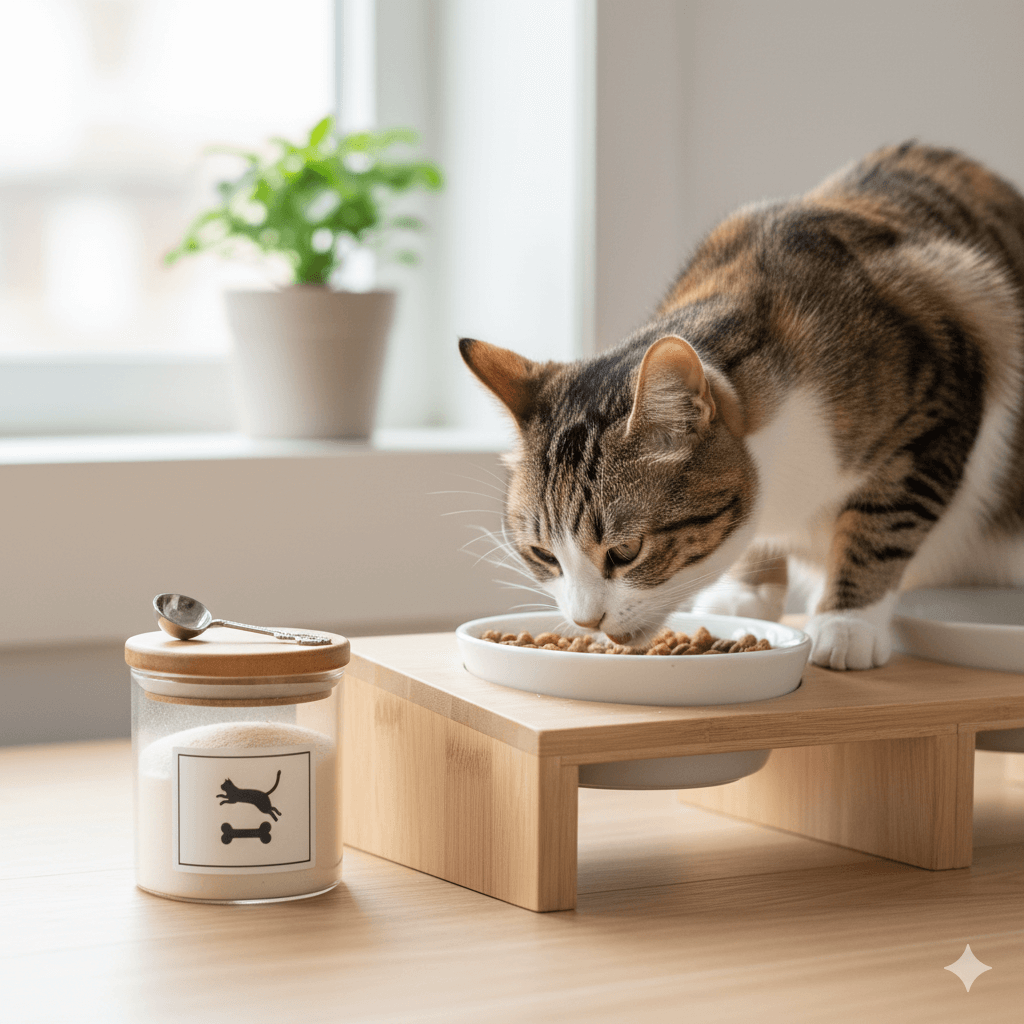Why Is My Cat So Big But Not Fat? Understanding Your Feline’s Size
Cats are mysterious creatures, and their size can sometimes leave us scratching our heads. If you’ve ever wondered why your cat seems unusually large but doesn’t appear to be overweight, you’re not alone. Many cat owners find themselves pondering this question, especially when their feline companions boast a robust frame without the telltale signs of flab. In this blog post, we’ll explore the reasons behind your cat’s impressive stature, from genetics to lifestyle factors. By the end, you’ll have a clearer understanding of what makes your cat so big—but not fat—and how to ensure they stay healthy and happy.
Genetics: The Blueprint of Your Cat’s Size
A cat’s size is often determined by its genetic makeup, which plays a crucial role in shaping its physical characteristics. Understanding your cat’s breed and lineage can provide valuable insights into why they might be larger than average. Here are some key points to consider:
Breed Matters: Certain breeds, such as the Maine Coon or Norwegian Forest Cat, are naturally larger due to their genetic predisposition. These cats were historically bred for survival in harsh climates, resulting in bigger bodies and thicker coats.
Mixed Genetics: Even if your cat isn’t a purebred, their mixed ancestry could include genes from larger breeds, contributing to their size.
Parental Influence: A cat’s size is often inherited from its parents. If both parents are on the larger side, their offspring are likely to follow suit.
Natural Variation: Just like humans, cats can vary significantly in size even within the same breed or family. Some individuals are simply destined to be bigger.
Health Screening: If you adopted your cat, consider consulting a veterinarian to rule out any underlying health conditions that might affect their growth.
Understanding your cat’s genetic background can help you appreciate their unique size while ensuring you provide the care they need. Remember, a big cat isn’t necessarily unhealthy—just make sure their weight aligns with their frame.
Diet and Nutrition: Fueling Your Cat’s Growth
What your cat eats directly impacts their size and overall health. A balanced diet ensures they grow at a healthy rate, but certain factors can lead to a larger-than-average physique. Let’s break it down:
High-Quality Food: Premium cat food rich in protein and essential nutrients supports muscle development and a healthy body structure.
Portion Control: Overfeeding can lead to excess weight, but providing the right amount of food ensures your cat grows proportionally.
Kitten Nutrition: Cats fed a nutrient-dense diet during their early months may develop a larger frame as they mature.
Hydration: Wet food or adequate water intake helps maintain muscle tone and prevents bloating, which can make a cat appear larger than they are.
Supplements: In some cases, veterinarians recommend supplements to support bone and muscle growth, especially in active or large-breed cats.
Proper nutrition is key to maintaining your cat’s ideal size. By focusing on quality ingredients and appropriate portions, you can help your feline thrive without tipping the scales.
Check this guide 👉Turkey Cat Food: Top 4 Best Picks for a Healthy, Happy Cat!
Check this guide 👉Top 4 Best Sensitive Cat Foods for Ultimate Relief!
Check this guide 👉Top 4 Best Canned Cat Food Products Your Feline Will Love!

Factors Contributing to Size | Tips for Managing Your Cat’s Health |
|---|---|
Genetic predisposition | Research your cat’s breed or ancestry |
High-quality diet | Feed premium food and avoid overfeeding |
Early nutrition | Provide nutrient-rich kitten food |
Activity level | Encourage play and exercise daily |
Regular vet check-ups | Monitor growth and address concerns |
Activity Level: How Exercise Shapes Your Cat’s Build
A cat’s activity level plays a significant role in determining their physique. Active cats tend to have leaner, more muscular builds, while less active ones may appear stockier. Here’s how exercise contributes to your cat’s size:
Muscle Development: Regular play and movement help build strong muscles, giving your cat a toned appearance.
Energy Expenditure: Active cats burn calories efficiently, preventing excessive weight gain while maintaining a healthy frame.
Mental Stimulation: Engaging toys and activities reduce stress, which can indirectly impact your cat’s appetite and metabolism.
Outdoor vs. Indoor Cats: Outdoor cats often have more opportunities for exercise, leading to a more athletic build compared to indoor counterparts.
Interactive Play: Spend at least 15–20 minutes daily playing with your cat to keep them physically and mentally fit.
By encouraging regular exercise, you can help your cat maintain a balanced physique. Remember, a big cat doesn’t mean a lazy one—a little activity goes a long way!
Health Considerations: When Size Becomes a Concern
While a large cat can be perfectly healthy, it’s essential to monitor for signs of potential issues. Certain medical conditions can cause abnormal growth or weight gain. Keep these points in mind:
Hypothyroidism: This condition can slow down metabolism, leading to weight gain despite normal eating habits.
Acromegaly: A rare hormonal disorder that causes excessive growth and enlarged features in cats.
Fluid Retention: Conditions like heart disease or kidney problems may cause bloating, making your cat appear larger.
Parasites: Internal parasites can interfere with nutrient absorption, affecting your cat’s overall health and size.
Obesity: While your cat may not be fat, it’s still important to differentiate between a big frame and excessive weight.
Regular veterinary check-ups are crucial to rule out underlying health issues. If you notice sudden changes in your cat’s size or behavior, consult a professional promptly.
Environmental Factors Influencing Size
Your cat’s environment plays a significant role in shaping their physical development. From the space they have to roam to the climate they live in, external factors can contribute to their overall size. Here are some environmental influences to consider:
Living Space: Cats with more room to move around tend to be more active, which can lead to a leaner, more muscular physique.
Climate: Colder climates may encourage thicker fur and slightly larger body sizes as cats adapt to retain heat.
Social Interaction: Cats in multi-pet households often engage in more play, which can promote healthy growth and muscle tone.
Stress Levels: A calm and enriching environment reduces stress, which can positively impact your cat’s appetite and metabolism.
Access to Outdoor Areas: Cats with supervised outdoor time may develop stronger muscles due to increased physical activity.
By creating a stimulating and supportive environment, you can help your cat grow into their full potential while maintaining a healthy weight.
The Role of Age in Cat Size
A cat’s age is a key determinant of their size and overall build. Kittens, adults, and senior cats all experience different stages of growth and physical changes. Here’s how age impacts your cat’s size:
Kittenhood: Rapid growth occurs during the first year, with kittens doubling or tripling their birth weight within weeks.
Adolescence: Between 6 months and 2 years, cats reach their full adult size, with some breeds continuing to fill out until they’re 4 years old.
Prime Adult Years: Cats aged 2–7 years typically maintain their peak physical condition, with muscle tone and size stabilizing.
Senior Cats: Older cats may lose muscle mass or appear smaller due to age-related changes in metabolism and activity levels.
Growth Plateaus: Understanding when your cat stops growing helps you identify whether their size is natural or unusual for their age.
Monitoring your cat’s growth over time allows you to appreciate their unique journey and address any concerns early on.
Behavioral Traits Linked to Size
Your cat’s behavior can offer clues about their size and physical development. Certain habits and tendencies may influence how big—or small—they appear. Consider these behavioral traits:
Playfulness: Active cats who love to jump, climb, and chase toys often develop stronger muscles, contributing to a robust frame.
Eating Habits: Cats who eat quickly or graze throughout the day may seem larger due to bloating or consistent food intake.
Sleep Patterns: Cats who sleep excessively may lack the energy to burn calories, potentially leading to a stockier appearance.
Curiosity: Exploratory cats who investigate every nook and cranny tend to stay agile and fit, balancing their size with athleticism.
Affection Levels: Lap cats who spend hours cuddling may appear larger due to their relaxed lifestyle, even if they’re not overweight.
Understanding your cat’s behavior provides valuable insights into their size and helps you tailor their care accordingly. By observing their daily habits, you can ensure they remain healthy and happy at any size.
Frequently Asked Questions About Big Cats
Is it normal for my cat to be larger than other cats I’ve owned?
Yes, size variations are common among cats due to genetics, breed, and lifestyle factors.
How can I tell if my big cat is overweight?
Check for a visible waistline and feel for ribs beneath a thin layer of fat. If unsure, consult your vet.
Should I change my cat’s diet if they’re too big?
Only adjust their diet under veterinary guidance to ensure they receive proper nutrition.
Can neutering/spaying affect my cat’s size?
Yes, these procedures can slightly alter metabolism, potentially leading to weight changes.
Are big cats more prone to health problems?
Not necessarily, but larger breeds may face breed-specific issues, so regular vet visits are essential.
Embracing Your Cat’s Unique Size
Every cat is special, and their size is just one aspect of their individuality. Whether your feline friend is genetically predisposed to be large, fueled by a nutritious diet, or simply blessed with an active lifestyle, their size reflects their unique journey. By understanding the factors that contribute to their build and prioritizing their health, you can ensure your cat remains happy and thriving. Remember, a big cat isn’t a problem—it’s a testament to their incredible diversity. So, celebrate your furry companion’s size and enjoy the joy they bring to your life!
Understanding Bone Supplement for Cats: Best 7 Expert Tips! – Safe, vet-approved guidance for strong feline bones & balanced nutrition.
Bone Supplement for Dogs: Best 7 Expert Tips! – Expert guide to calcium, collagen & bone health for every life stage.
Understanding Can Cats Get Sunburn: Best 7 Expert Tips! – Protect your feline from UV damage with vet-backed prevention strategies.
How to Train a Seizure Alert Dog: Best 7 Expert Tips! – Learn expert-backed steps to nurture natural instincts into reliable, life-saving seizure alerts.





